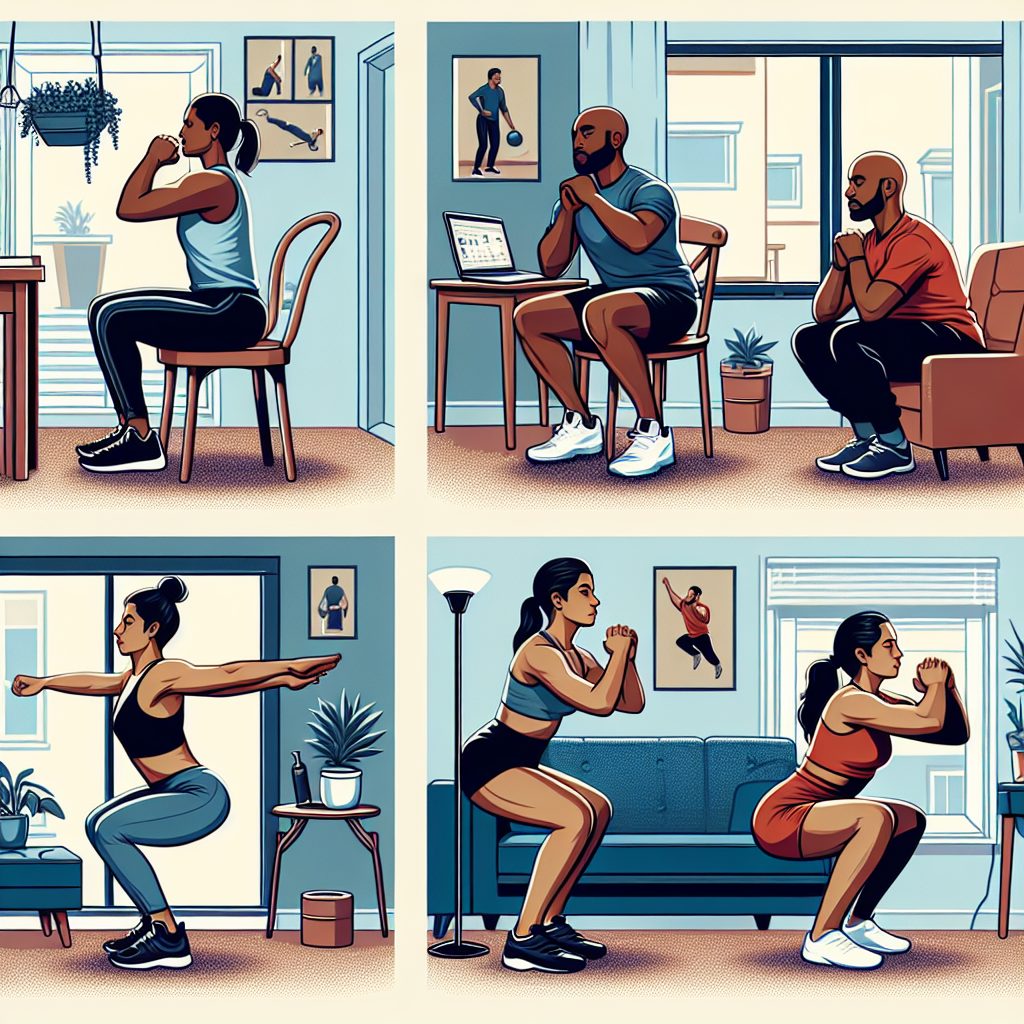Chair Squat Variations: Effortless Moves for Small Spaces

Chair squat variations are an excellent way to incorporate strength training into your routine, especially when space is limited. These exercises not only build lower body strength but also enhance balance and flexibility—all without requiring a large gym or complex equipment. In just a small area of your home, you can perform effective workouts using a chair as your primary piece of equipment.
Why Choose Chair Squat Variations?
Chair squats are incredibly versatile and can be easily modified to suit various fitness levels. They target key muscle groups, including the quadriceps, hamstrings, and gluteal muscles. Plus, they serve as a functional exercise that mimics movements you perform in daily life, such as sitting and standing. This makes them particularly beneficial for individuals of all ages and fitness backgrounds.
Basic Chair Squat
Before diving into variations, mastering the basic chair squat is essential. Here’s how you can perform it:
1. Stand in front of a sturdy chair with your feet shoulder-width apart.
2. Engage your core, and keep your back straight.
3. Lower your body by bending your knees and pushing your hips back as if you are about to sit.
4. Stop just above the chair, hold for a second, and then return to standing.
This simple movement lays the foundation for a host of variations that can intensify your workout.
Advanced Chair Squat Variations
1. Single-Leg Chair Squat
For those looking to challenge their balance and strength further, the single-leg chair squat is a perfect choice.
– Stand on one leg in front of the chair, holding onto the back for balance if necessary.
– Lower your body into a squat position while keeping the other leg extended in front of you.
– Push through the foot on the ground to return to the standing position.
This variation not only targets the leg muscles but also enhances stability and coordination.
2. Chair Squat with a Pulse
This is a great way to increase the intensity of the movement and engage your muscles even more.
– Perform a basic chair squat and lower yourself to just a couple of inches above the chair.
– Hold this position for a few seconds, then make small “pulsing” movements by lowering and raising your torso slightly without fully standing up.
– After several pulses, rise and return to standing.
This technique will get your heart rate up and works the muscles harder, promoting stronger legs and improved stamina.
3. Chair Squat with Arm Raise
Incorporating your upper body can turn a squat into a full-body workout.
– As you lower into the squat, raise your arms overhead.
– Return to standing while lowering your arms back down to your sides.
This not only provides an additional challenge but also helps improve overall coordination and arm strength.
Incorporating Chair Squats into Your Routine
Incorporating chair squat variations into your workout routine is simple. Here’s a sample workout structure you can follow:
– Warm-Up: Spend 5-10 minutes doing light cardio, such as marching in place or gentle stretching.
– Workout:
– Basic Chair Squats – 3 sets of 10-15 reps
– Single-Leg Chair Squats – 3 sets of 5-10 reps per leg
– Chair Squat with a Pulse – 3 sets of 10-12 pulses
– Chair Squat with Arm Raise – 3 sets of 10-15 reps
– Cool Down: Finish with light stretching focusing on your legs and hips.
Tips for Success
– Focus on form: Always maintain a neutral spine and proper knee alignment during squats to prevent injuries.
– Use a sturdy chair: Ensure your chair can support your weight and is stable. Avoid chairs with wheels or that might tip over.
– Listen to your body: If you experience pain, stop the exercise and adjust your technique or seek advice tailored to your needs.
Conclusion: Embrace the Space
Chair squat variations are an effective and space-efficient way to enhance your workout routine. Whether you’re looking to build strength, improve your stability, or add variety to your fitness plan, these exercises provide an excellent solution. Embrace the small space you have and make the most of it with these effortless moves. Your body—and your fitness goals—will thank you.
